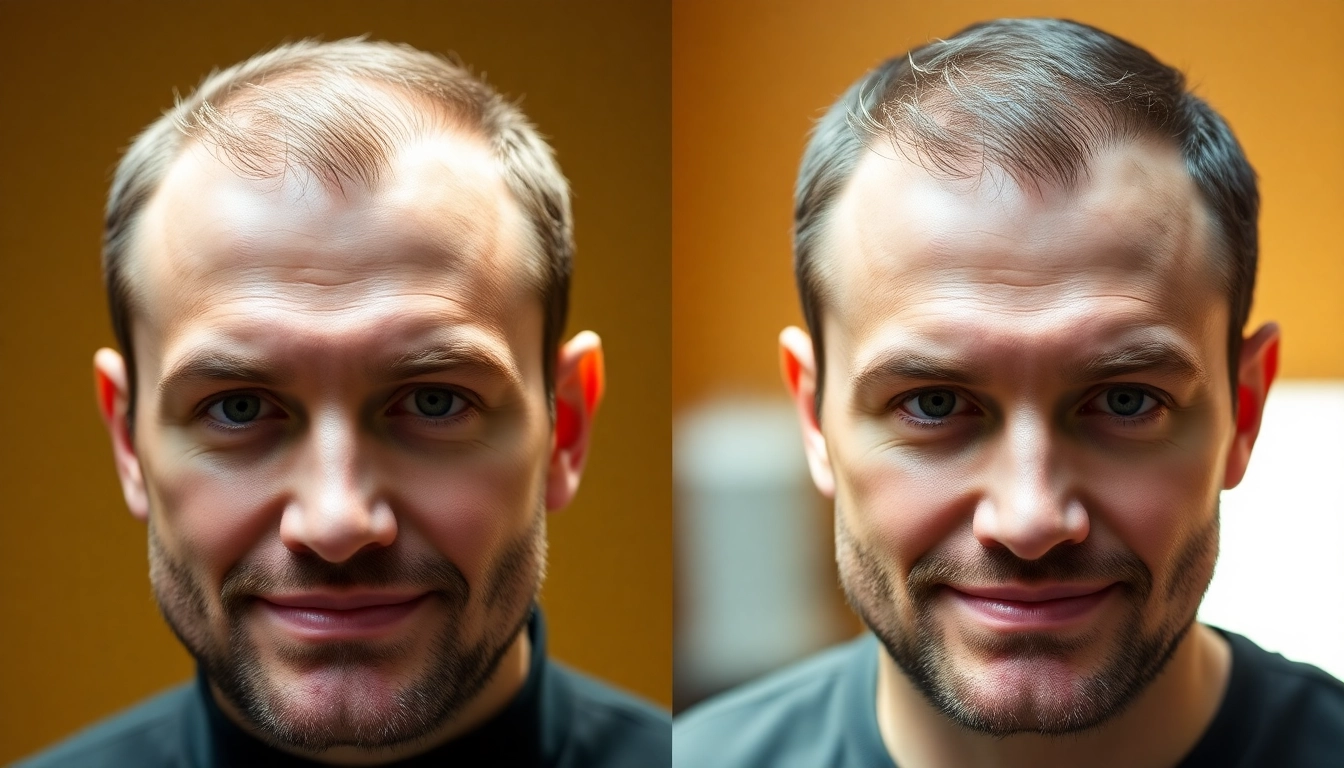Understanding Hair Loss
Hair loss is a common issue affecting millions of people worldwide, leading to a significant effect on self-esteem and personal appearance. This phenomenon, particularly prevalent among men, raises concerns about one’s confidence and attractiveness, ultimately motivating many individuals to explore solutions such as hair transplants. One notable personality who has openly addressed this subject is Jimmy Carr, the well-known comedian whose journey through hair loss and subsequent restoration has drawn public attention and interest.
The Causes of Hair Loss
Understanding hair loss begins with recognizing its underlying causes. Hair loss can be attributed to various factors, including:
- Genetics: The most prevalent cause of hair loss, genetic predisposition often leads to male and female pattern baldness.
- Hormonal Changes: Conditions like hormonal imbalances, especially related to thyroid or androgens, can trigger significant hair loss.
- Medical Conditions: Diseases like alopecia areata, thyroid conditions, and iron deficiency anemia contribute to hair thinning.
- Medications: Certain drugs for conditions such as cancer, arthritis, or depression can lead to hair loss as a side effect.
- Stress: Physical or emotional stress can lead to telogen effluvium, where hair follicles enter a resting phase and fall out.
Types of Hair Loss: A Closer Look
There are several types of hair loss, each with distinct characteristics:
- Androgenetic Alopecia: This hereditary condition is commonly known as male or female pattern baldness, characterized by gradual thinning.
- Alopecia Areata: An autoimmune disorder that results in sudden hair loss in small, round patches.
- Telogen Effluvium: Often triggered by stress or hormonal changes, this type leads to temporary hair shedding.
- Traction Alopecia: Associated with styles that pull on the hair, such as tight ponytails or braids.
Why Seek a Hair Transplant?
Individuals seek hair transplants for various reasons, including:
- Restoration of Hairline: A desire to restore a youthful appearance often drives individuals to undergo a hair transplant.
- Increased Self-Confidence: Improved hair density can lead to enhanced self-esteem and a positive self-image.
- Long-Term Solution: Unlike temporary measures such as hairpieces or products, hair transplants provide a lasting solution by encouraging natural hair growth.
Jimmy Carr’s Hair Loss Journey
Jimmy Carr, a prominent figure in comedy, has not shied away from discussing his personal challenges with hair loss, making his story relatable to many who share similar experiences.
Initial Concerns and Public Perception
Over the years, Carr’s evolving hairstyle became a topic of public curiosity. Initially, he displayed a prominent widow’s peak, which led to speculation about his hair density. His self-deprecating humor often acknowledged his hair loss and brought attention to the prevalent concern of male pattern baldness among men in the entertainment industry.
Deciding to Undergo a Hair Transplant
After grappling with hair loss for over a decade, Carr made the decision to undergo a hair transplant, embracing a proactive approach to managing his image. His choice reflects a growing trend among men prioritizing their appearance and considering surgical options for hair restoration.
Challenges Faced During the Process
While procedure details often remain private, Carr has shared insights into the challenges of the hair transplant journey. From the initial consultations to the emotional aspects of surgery, these hurdles are common among individuals navigating the hair restoration process.
The Hair Transplant Procedure Explained
The mechanics of hair transplantation involves intricate processes, primarily focusing on the transplantation of hair follicles from one part of the body to an area with thinning or no hair.
Types of Hair Transplant Techniques
There are two primary techniques used in hair transplantation:
- Follicular Unit Extraction (FUE): A minimally invasive method where individual hair follicles are extracted from the donor area and implanted into the recipient site.
- Follicular Unit Transplantation (FUT): Involves removing a strip of skin containing hair follicles from the donor area, from which individual grafts are prepared and implanted.
What is Follicular Unit Extraction (FUE)?
FUE has garnered popularity for its less invasive nature and quick recovery period. Using a specialized tool, surgeons extract individual follicular units, leaving minimal scarring. This technique allows for more precise placement during transplantation, leading to a more natural-looking hairline.
Procedure Steps: What to Expect
The hair transplant procedure typically unfolds as follows:
- Consultation: Discussing goals, assessing hair loss, and planning the procedure with the medical team.
- Preparation: Shaving the donor area and numbing it to ensure comfort throughout the process.
- Extraction: Harvesting hair follicles using FUE techniques or obtaining strips for FUT.
- Implantation: Placing harvested follicles in the designated areas, following the natural hair growth pattern.
- Post-Procedure Care: Establishing a recovery plan, which includes medication and recommendations for site care.
Results of Jimmy Carr’s Hair Transplant
Following the transplant, many individuals, including Carr, closely monitor the outcomes, eagerly anticipating their transformed appearance.
Before and After Comparison
Images shared by Carr and other sources highlight a drastic transformation in Jimmy’s hairline. The once prominent widow’s peak has been rejuvenated, leading to a fuller, more youthful appearance. Such comparisons often serve as compelling testimonials for those considering similar procedures.
Recovery Timeline and Techniques
The recovery process following a hair transplant varies but generally includes a few crucial steps:
- Immediate Aftercare: Patients are usually provided with instructions to manage discomfort and protect the newly implanted follicles.
- Initial Shedding: In the weeks following the procedure, it’s common for transplanted hair to shed, leading to temporary hair thinning.
- Growth Timeline: New hair usually begins to appear within a few months, with optimal results visible around 6-12 months post-surgery.
Long-Term Effects on Appearance
The success of a hair transplant can be measured not only in the immediate visible results but also in the long-term sustainability of hair growth. For Jimmy Carr, the improvement in his hairline has resulted in a notable boost in confidence and has positively influenced public reception of his appearance.
Analyzing the Impact of Hair Restoration
The decision to undergo hair restoration can have far-reaching effects, both personally and professionally, particularly for someone in the public eye like Jimmy Carr.
Social Media and Fan Reactions
Following his transformation, Carr’s social media platforms lit up with reactions from fans and followers. Many expressed admiration for his openness regarding the procedure, while others praised the results, contributing to a positive online presence. Such interactions signify a growing acceptance and appreciation for hair restoration choices among public figures.
The Influence on Jimmy Carr’s Career
In an industry that often places a premium on appearance, Carr’s hair restoration journey may have reinforced his marketability as a comedian. It underscores the significance of personal branding and the favorable effects of maintaining a polished image, especially in a competitive entertainment landscape.
Hair Transplants: A Growing Trend Among Celebrities
Carr is not alone in his pursuit of hair restoration; he is part of a broader trend among male celebrities opting for hair transplants to combat hair loss. High-profile figures such as Wayne Rooney and various actors have also embraced similar solutions. The normalization of these procedures suggests a shift in societal attitudes toward cosmetic enhancements and personal grooming, emphasizing the importance of self-care.
Conclusion
With his journey, Jimmy Carr highlights the complex relationship individuals have with their appearance, especially in the face of hair loss. Through his decision to undergo a hair transplant and share his experience, he has contributed to the ongoing dialogue around self-image, acceptance, and the pursuit of personal confidence. As hair restoration becomes a more common choice among men, it reflects not only advances in medical technology but also evolving cultural norms regarding beauty and authenticity.



